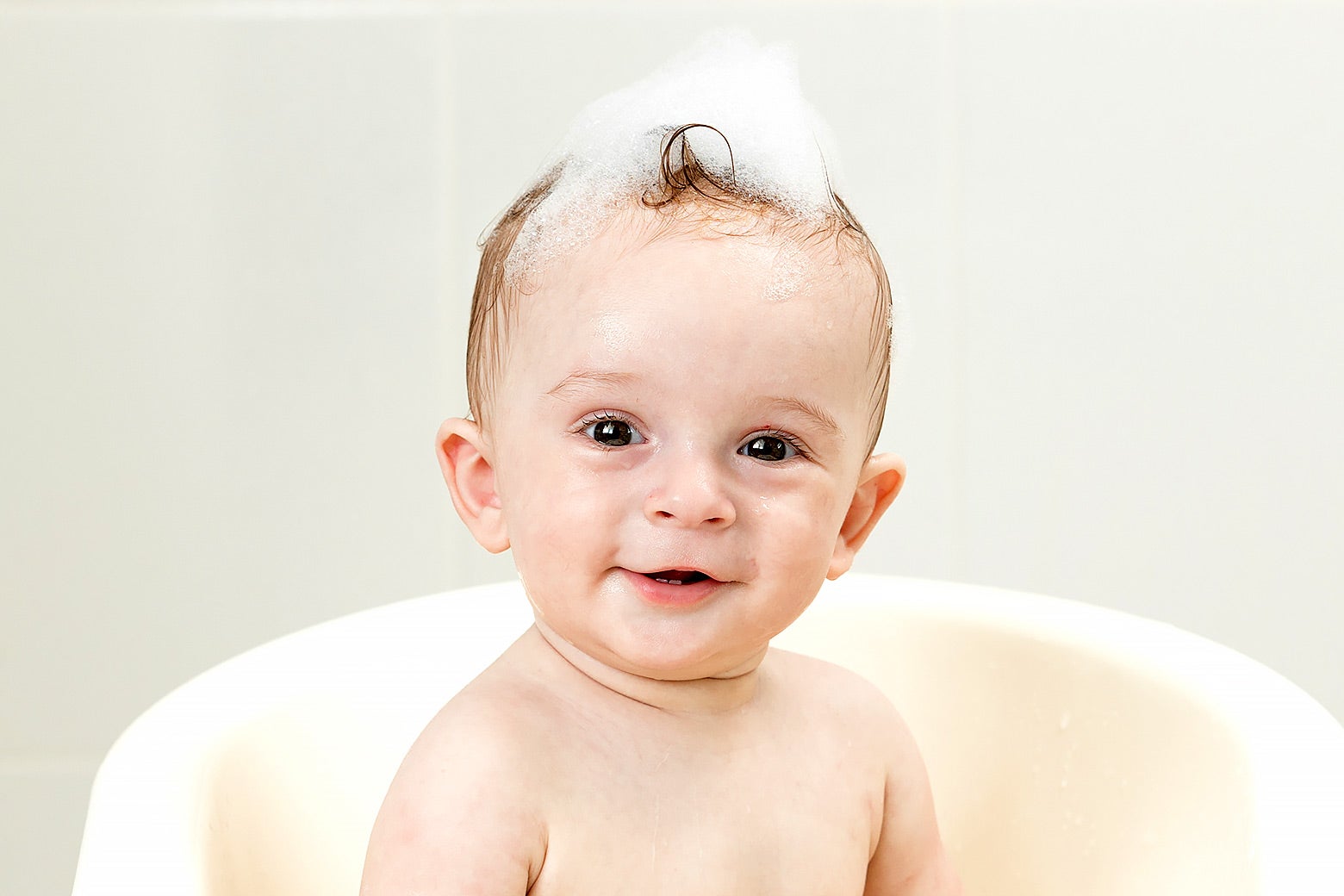I vividly remember the Facebook post. It was my friend’s 5-year-old daughter “Kate,” (a pseudonym) standing outside of her house in a bright yellow bikini, the street address clearly visible behind her on the front door. A caption read “Leaving for our annual Labor Day weekend at the beach,” and beneath it were more than 50 likes and comments from friends—including many “friends” that Kate’s mom barely knew.
The picture had been uploaded to a Facebook album, and there were 114 shots just of Kate: freshly cleaned and swaddled on the day of her birth … giving her Labradoodle a kiss … playing on a swing set. But there were also photos of her in a bathtub and an awkward moment posing in her mother’s lacy pink bra.
I completely understood her parents’ desire to capture Kate’s everyday moments, because early childhood is so ephemeral. I also knew how those posts would affect Kate as an adult, and the broader impact of creating a generation of kids born into original digital sin.
Last week, Facebook updated its privacy policy again. It reads in part: “We are able to suggest that your friend tag you in a picture by scanning and comparing your friend’s pictures to information we’ve put together from your profile pictures and the other photos in which you’ve been tagged.” Essentially, this means that with each photo upload, Kate’s parents are, unwittingly, helping Facebook to merge her digital and real worlds. Algorithms will analyze the people around Kate, the references made to them in posts, and over time will determine Kate’s most likely inner circle.
The problem is that Facebook is only one site. With every status update, YouTube video, and birthday blog post, Kate’s parents are preventing her from any hope of future anonymity.
That poses some obvious challenges for Kate’s future self. It’s hard enough to get through puberty. Why make hundreds of embarrassing, searchable photos freely available to her prospective homecoming dates? If Kate’s mother writes about a negative parenting experience, could that affect her ability to get into a good college? We know that admissions counselors review Facebook profiles and a host of other websites and networks in order to make their decisions.
There’s a more insidious problem, though, which will haunt Kate well into the adulthood. Myriad applications, websites, and wearable technologies are relying on face recognition today, and ubiquitous bio-identification is only just getting started. In 2011, a group of hackers built an app that let you scan faces and immediately display their names and basic biographical details, right there on your mobile phone. Already developers have made a working facial recognition API for Google Glass. While Google has forbidden official facial recognition apps, it can’t prevent unofficial apps from launching. There’s huge value in gaining real-time access to view detailed information the people with whom we interact.
The easiest way to opt-out is to not create that digital content in the first place, especially for kids. Kate’s parents haven’t just uploaded one or two photos of her: They’ve created a trove of data that will enable algorithms to learn about her over time. Any hopes Kate may have had for true anonymity ended with that ballet class YouTube channel.
Knowing what we do about how digital content and data are being cataloged, my husband and I made an important choice before our daughter was born. We decided that we would never post any photos or other personally identifying information about her online. Instead, we created a digital trust fund.
The process started in earnest as we were selecting her name. We’d narrowed the list down to a few alternatives and ran each (and their variants) through domain and keyword searches to see what was available. Next, we crawled through Google to see what content had been posted with those name combinations, and we also looked to see if a Gmail address was open.
We turned to KnowEm.com, a website I often rely on to search for usernames, even though the site is primarily intended as a brand registration service. We certainly had a front-runner for her name, but we would have chosen something different if the KnowEm results produced limited availability or if we found negative content associated with our selection.
With her name decided, we spent several hours registering her URL and a vast array of social media sites. All of that tied back to a single email account, which would act as a primary access key. We listed my permanent email address as a secondary—just as you’d fill out financial paperwork for a minor at a bank. We built a password management system for her to store all of her login information.
On the day of her birth, our daughter already had accounts at Facebook, Twitter, Instagram, and even Github. And to this day, we’ve never posted any content.
All accounts are kept active but private. We also regularly scour the networks of our friends and family and remove any tags. Those who know us well understand and respect our “no posts about the kid” rule.
When we think she’s mature enough (an important distinction from her being technically old enough), we’ll hand her an envelope with her master password inside. She’ll have the opportunity to start cashing in parts of her digital identity, and we’ll ensure that she’s making informed decisions about what’s appropriate to reveal about herself, and to whom.
It’s inevitable that our daughter will become a public figure, because we’re all public figures in this new digital age. I adore Kate’s parents, and they’re raising her to be an amazing young woman. But they’re essentially robbing her of a digital adulthood that’s free of bias and presupposition.
